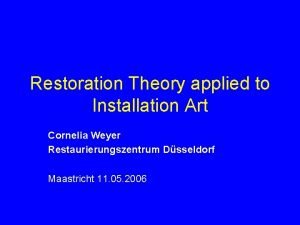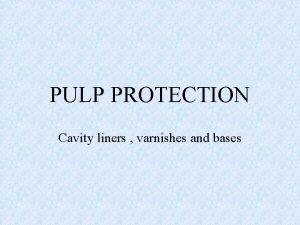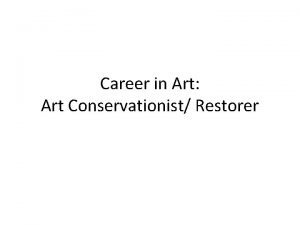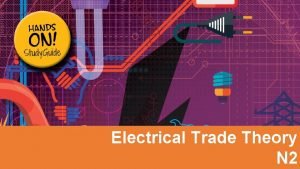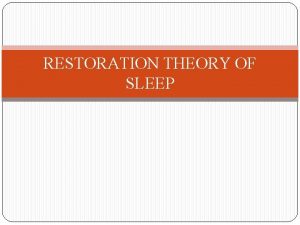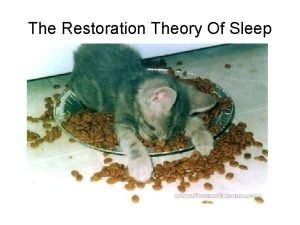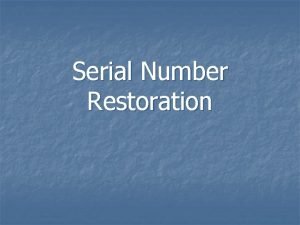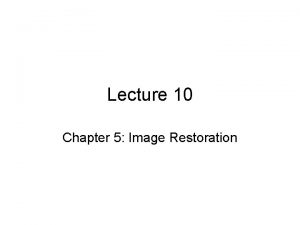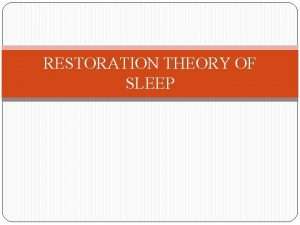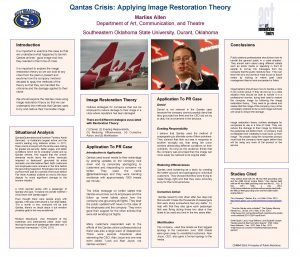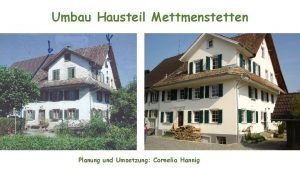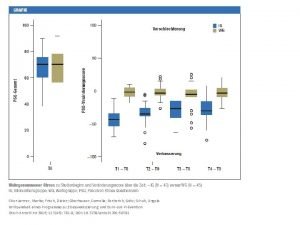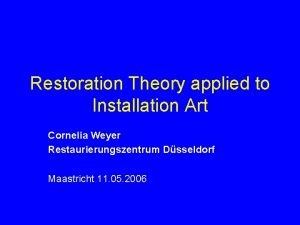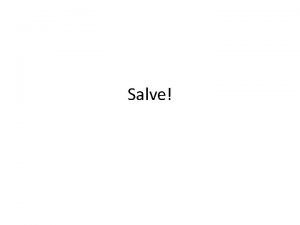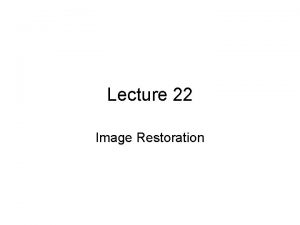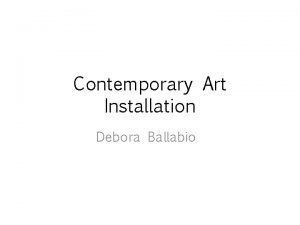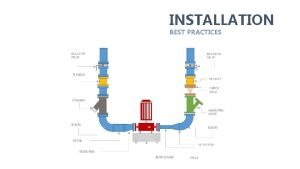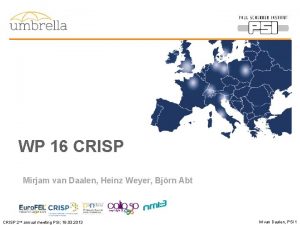Restoration Theory applied to Installation Art Cornelia Weyer


















- Slides: 18

Restoration Theory applied to Installation Art Cornelia Weyer Restaurierungszentrum Düsseldorf Maastricht 11. 05. 2006

• Origin and type of four central rules of restoration theory • Characteristic features of installation art • Confrontation of restoration theory and installation art: the conflict potential • Conclusion

Origin and type of four central rules of restoration theory • • Durability Authenticity Minimal intervention Reversibility

Origin and type of four central rules of restoration theory • Durability: the restorer must use highly stable media to ensure that after the treatment the work of art stays unchanged for a long time - Scientific origin

Origin and type of four central rules of restoration theory • Authenticity: The objective is the unfalsified preservation of an object, usually understood to be a work of art, but in more recent texts also to be an object of cultural heritage - philological origin

Origin and type of four central rules of restoration theory • Minimal intervention: restricting intervention to what is absolutely necessary - museum context as opposed to monument conservation

Origin and type of four central rules of restoration theory • Reversibility /retreatability: selection of materials and methods of a restorational intervention so as to leave room for later interventions

Characteristic features of installation art • The significance of the relation between the parts and the whole, including the setting Thomas Hirschhorn, Doppelgarage, (2002), Bayerische Staatsgemäldesammlungen, Doerner Institut, München

Characteristic features of installation art • Processuality crossing the divide between pictorial and performance arts Nam June Paik, One Candle (1991, 1996) Museum für Moderne Kunst, Frankfurt/M.

Characteristic features of installation art • Optical phenomena and the extension of sense perception to include the senses of audio, smell, taste and feeling Fabrizio Plessi, Liquid Time (1993), Sammlung ZKM, Karlsruhe

Characteristic features of installation art • The observer as constitutive element Ross Sinclair, Journey to the Edge of the World The New Republic of St. Kilda (1966), Hamburger Kunsthalle

Characteristic features of installation art • Art also about art Ulrike Rosenbach, Glauben Sie nicht, daß ich eine Amazone bin (1975), museum kunst palast, Restaurierungszentrum Düsseldorf

Confrontation of restoration theory and installation art: the conflict potential • Conservation of installation art by means of durable material? - object / significance Dennis Oppenheim, Aging, Reina Sofia, Madrid

Confrontation of restoration theory and installation art: the conflict potential • Authenticity of material and workmanship / aiming at „giving the observer as authentic an aesthetic experience as possible“ (Bishop) Thomas Hirschhorn, Doppelgarage (2002), Bayerische Staatsgemäldesammlungen, Doerner Institut, München

Confrontation of restoration theory and installation art: the conflict potential • Minimal intervention / installation art has to fulfil a function going beyond display in a museum - similar to monumental heritage Thomas Hirschhorn, Doppelgarage (2002), Bayerische Staatsgemäldesammlungen, Doerner Institut, München

Confrontation of restoration theory and installation art: the conflict potential • Reversibility if reinstallation is not necessarily the appropriate way of treatment? ephemeral character of some installation artworks Ross Sinclair, Journey to the Edge of the World The New Republic of St. Kilda (1966), Hamburger Kunsthalle

Conclusion • Loss of the material object as being a conservation‘s main reference • Change of roles from conservatorrestorer to artist‘s assistent • „social use“ - contemporary installation art - the intangible

Consequences • Taking a step back from the conservator -restorer‘s usual attachment to material and technique • assess the effect of the work • aesthetic appreciation • readiness to engage with a work‘s idiosyncrasies
 Cornelia weyer
Cornelia weyer Cornelia weyer
Cornelia weyer Ent constantin weyer
Ent constantin weyer Glincore
Glincore Infected and affected dentin
Infected and affected dentin Art restoration salary
Art restoration salary Trade theory in electrical installation
Trade theory in electrical installation Sleep restoration theory
Sleep restoration theory Oswald 1966 restoration theory
Oswald 1966 restoration theory Restoration theory of sleep
Restoration theory of sleep Repair and restoration theory of sleep
Repair and restoration theory of sleep How to restore serial numbers by acid etching
How to restore serial numbers by acid etching Chapter 5 images
Chapter 5 images Repair theory of sleep
Repair theory of sleep Image restoration theory
Image restoration theory Cornelia hannig
Cornelia hannig Sybils group inc
Sybils group inc Cornelia wilbur
Cornelia wilbur Cornelia berberich
Cornelia berberich
